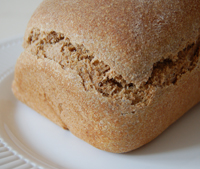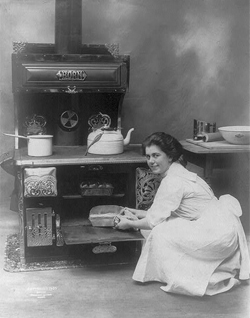That’s right, together: I have flour-fear issues, too.
My issue has traditionally been a fear of refined carbs. I love baking and eating baked goods, but I’m a whole grain girl. It’s not a bad thing to be. When companies make white flour, they remove the fiber-filled wheat bran and high-nutrient wheat germ from the kernel, leaving the low-nutrient endosperm. When you eat white flour, not only are you getting fewer nutrients, but white flour also takes less time for your body to process. Thus, as the women’s magazines at my gym scream in perky pink fonts, “Whole grains make you feel fuller longer!”
I’m also a frequent baker, and, like an egomaniac who always inserts his personal experiences into the most impersonal conversations, I put whole wheat flour in places where nobody ever asked it to be. Tucking it inside my breads is reasonable, but I also put it in my cookies and cakes as well. When companies started selling whole wheat white flour — which is made from white wheat, a milder variety than the red wheat used to make traditional whole wheat flour — I had a pastry renaissance. So when I heard that home flour-grinding is possible, in the spirit of research and all things whole grain, I decided to jump on the bandwagon. Just as fresh fruits and vegetables are best for you, so is freshly ground flour; many nutrients from the flour oxidize within a few hours of grinding.
I sunk my money into a L’Equip VitaMill, a white plastic box with metal grinders that pulverize whole grains into a beautifully fine powder and makes my kitchen sound like someone turned a horror movie up to full volume. For my first experiment, I ground some red wheat berries and made a bread that kneaded easily and had a stronger flavor than most whole wheat bread, with the bran flavor shining through. As I gobbled a warm slice, I felt a bit of glee: I had made my own basic staple! I felt all-powerful!
But you know that moment in movies when the character makes the manic-depressive move from laughing elation to gulping sobs, realizing that something is wrong? My moment came when I sat down at my computer (a second slice of bread in front of me), and I started to write this piece. That’s when I had to face my true flour issue, one that runs deeper than just liking whole grains: the way in which I’ve been looking at flour as an entity of its own is like focusing on an engine without paying attention to what that vehicle it’s going to power. Sure, the engine is an important piece, but there’s a big difference between powering a scooter, a car, and a dump truck. There’s a science to moving vehicles forward, and there’s a science to the interactions of baked goods.
I got in touch with PJ Hamel at King Arthur Flour for a bit of personal flour therapy (or, as I professionally phased it, an “interview”). “Yes, you can bake a good loaf of bread with freshly ground whole wheat flour,” said PJ. But she also kindly reminded me that different flours “are very different to bake with, and each has its own baking characteristics.”
For example, cake flour is white and low gluten, and creates a fine crumb; bread flour is high in gluten to create springy loaves. If bakers such as myself limit ourselves to just to whole wheat, we’re also limiting, if you will, the vehicles we can drive. As I’m writing this now, I know I’m coming off like an idiot — duh, of course different flours are ideal for different baked goods. But fear of flour runs deep. While I enjoyed grinding my own flour, I also have to admit that it’s easy to convince myself that grinding ups my baking game when really, I’d be improving my skills much more if I ditched the grinder, got over my refined-grain thing, and made a damn cake with cake flour for once.
So in the end, grinding my own flour wasn’t cooking. It was therapy for flourphobia. • 17 December 2009
| Therapy Bread |
 2 3/4 cups warm water 2 3/4 cups warm water2 packets of yeast 1/3 cups honey 1/3 cups olive oil 2 T molasses tsp salt 7 1/2 cups freshly ground hard red wheat flour (can also use regular whole wheat flour) Combine the yeast, warm water, and honey; proof the yeast by waiting for it to bubble. Once it has done so, add the oil, molasses, salt, and 1 cup of the flour. Stir. Add the rest of the flour a cup at a time, stirring it in. Turn the dough onto a large floured cutting board or countertop and knead until smooth, approximately 8 minutes. Put the dough in an oiled bowl; flip the dough to make sure it’s completely covered in oil. Cover with plastic wrap and let rise until doubled. Once doubled, punch the dough down. Separate into two halves, form into loaves, and place in greased loaf pans. Pre-heat the oven to 350 degrees F. Cover the loaves with plastic wrap and let rise. When doubled, place the loaves in the oven and cook for approximately 45 minutes, until loaves sound hollow when tapped. Cool on a wire rack. |




